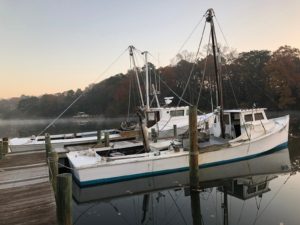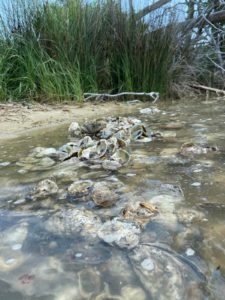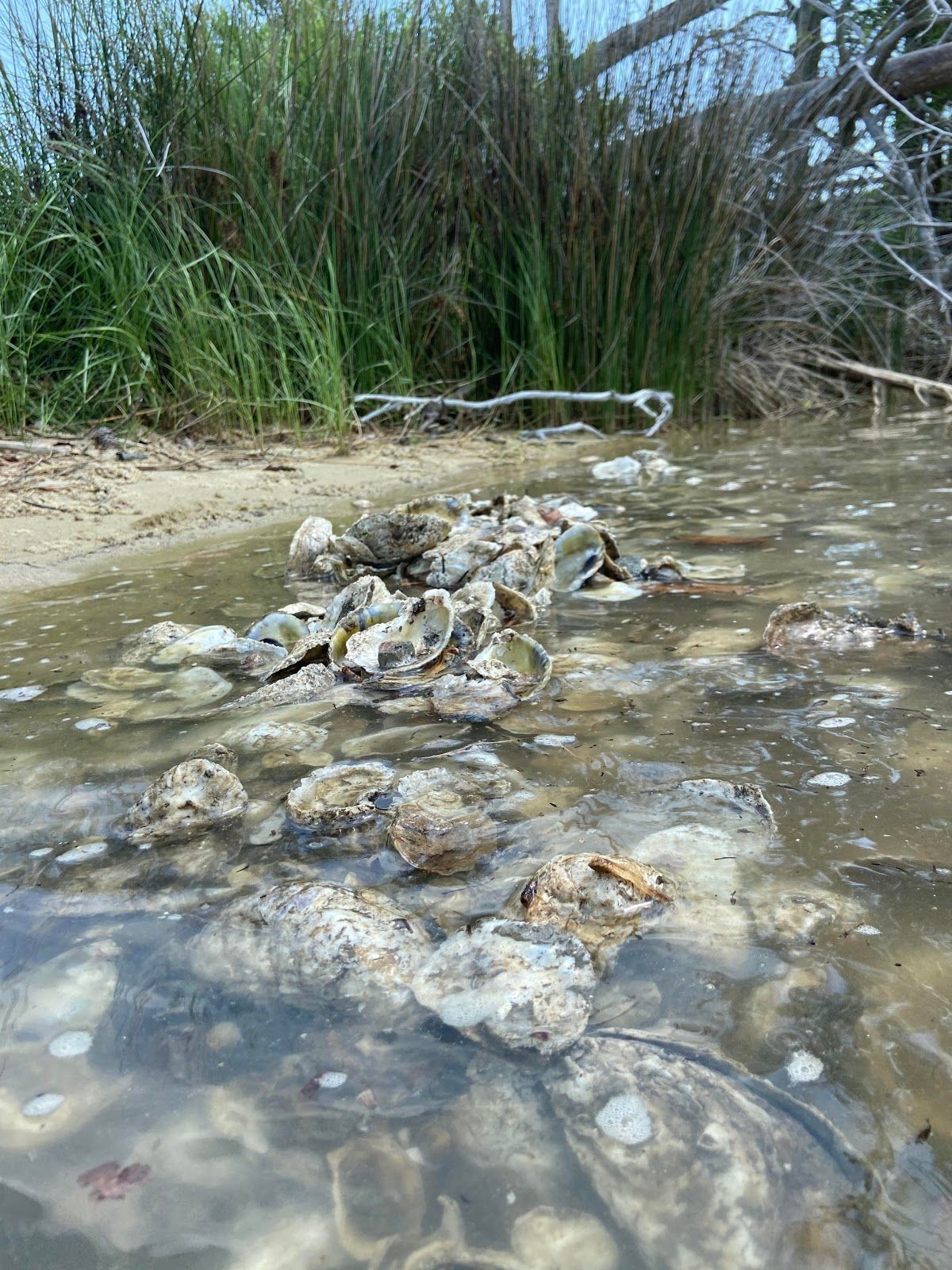The Virginia Oyster: Part II
Author: Aaron Rowland, Virginia Certified Ecotour Guide
Only one species of oyster, Crassostrea virginica, is native to the eastern seaboard. This oyster is sometimes called the Eastern oyster or the Virginia oyster. Whatever it is called, it runs from the east coast of Canada down to Florida, and then from Florida through the Gulf. If you have ever heard people refer to Blue Points, Chesapeake’s, or Gulf oysters, they are all Virginicas.
The Decline
The word Chesapeake means “great shellfish bay” in the Algonquin language, and it was called this for a good reason. When Captain John Smith was exploring the area he said they were so abundant that they were actually a navigation hazard. This abundance made them an immediate target for commercial activity by the Europeans.
While Europeans harvested oysters shortly after arriving, and got good at it very quickly, they did so on a smaller scale due to the limitations in their ability to transport the oysters. The low demand kept the harvest levels relatively low. That all changed in 1860 after the development of canning techniques that allowed oysters to be transported long distances without spoiling. This led to a boom in the oyster industry, with whole towns being built on the business. Between 1860 and 1920, about three quarters of all of the Bay’s oyster reefs disappeared.
Then with stocks already depleted, two diseases entered the Bay, killing oysters and further reducing stocks that were already severely depleted due to overharvesting. These diseases, paired with more and more pollution, served to plummet the remaining oyster stocks to the point that current harvest amounts are measured in the hundreds of thousands of bushels rather than in the millions. Commercial harvesting now supports only about 2% of the number of harvesters that existed toward the end of the 19th century.
 Harvests of wild oysters in Virginia have held steady recently at around 600,000 bushels per year. This stabilization is in large part due to a rotation system. Virginia only allows harvesting on certain beds at certain times, with most beds going at least three years between harvests. These public grounds were established in 1894. In an effort to gain a full understanding of the abundance, or lack thereof, of oysters in Virginia, the state commissioned a survey in 1892 of all oyster reefs in Virginia waters. This survey produced what are called the Baylor or public grounds. The terms are interchangeable, with Baylor being the name of the individual who headed up the survey. The Virginia Constitution guarantees that all productive oyster grounds remain available for public use. The Baylor survey set what those grounds would be, and it is still in use today.
Harvests of wild oysters in Virginia have held steady recently at around 600,000 bushels per year. This stabilization is in large part due to a rotation system. Virginia only allows harvesting on certain beds at certain times, with most beds going at least three years between harvests. These public grounds were established in 1894. In an effort to gain a full understanding of the abundance, or lack thereof, of oysters in Virginia, the state commissioned a survey in 1892 of all oyster reefs in Virginia waters. This survey produced what are called the Baylor or public grounds. The terms are interchangeable, with Baylor being the name of the individual who headed up the survey. The Virginia Constitution guarantees that all productive oyster grounds remain available for public use. The Baylor survey set what those grounds would be, and it is still in use today.
But oysters are not limited to the designated public grounds. Areas of the water that are not designated as public grounds are available to lease for private use. This is when a private citizen leases an area and cultivates their own shellfish bed. The water is still public, but the oysters on the bottom belong to the private individual so long as their lease is active. These private beds serve to take some pressure off of the natural reefs by serving as an alternative source for commercial oysters. And as a bonus, they also serve the same ecological functions as a wild reef.
The system of limited wild harvest and private beds essentially made up the whole of Virginia’s oyster industry until about 20 years ago. That is when Virginia got into breeding oysters and spawned a new industry in the Bay.
Recovery
 As the importance of the oyster to the overall health of the Bay has become better known, recovery efforts have picked up. Groups such as Friends of the Rappahannock, the Nature Conservancy, the Chesapeake Bay Foundation, the Oyster Recovery Partnership, and many others, have gotten involved on some level in oyster recovery. Federal and state agencies have also increased oyster recovery activities and a lot of progress has been made.
As the importance of the oyster to the overall health of the Bay has become better known, recovery efforts have picked up. Groups such as Friends of the Rappahannock, the Nature Conservancy, the Chesapeake Bay Foundation, the Oyster Recovery Partnership, and many others, have gotten involved on some level in oyster recovery. Federal and state agencies have also increased oyster recovery activities and a lot of progress has been made.
To better work together toward the common goal of oyster restoration, the Chesapeake Oyster Alliance was formed, which has the goal of putting ten billion oysters back in the Bay through both restoration and an increase in aquaculture. The Oyster Alliance seeks to bring everyone together to better promote oyster recovery and encourage government action. By bringing everyone together, groups can more easily collaborate, share resources, and work toward the same goal of increasing the number of oysters in the Bay!
If you would like to learn more about the importance of oysters in the Bay, recovery efforts, and ways to get involved, please check out some of the groups above. No matter where you live, there are lots of ways for everyone to get more involved!
And if you want to explore more about oysters and find places to sample all of the goodness that the Bay has to offer, you should visit the Virginia Oyster Trail. The Oyster trail has lists of oyster farms and farm- or oyster-related tours, where you can learn more about aquaculture or oysters in general. There are also cultural locations involving oyster art and education about the history of oysters and how they have influenced the region. And, of course, places to get oysters! The Oyster Trail will even break down which restaurants are serving oysters from which regions, giving you a chance to try as many different oysters as you want!
